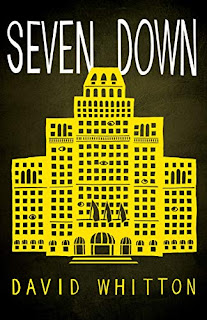When Heimdall and his companion, the Valkyrie Captain Uschi, return to his homeland of Vanaheim, they are shocked to find it in the grip of an infestation of draugr - hideous, undead creatures. But not everyone is welcoming of their presence or offers of help, making Heimdall’s task even harder, and he soon finds himself at odds with his own people. However, the threat of the draugr becomes even greater than Heimdall could have imagined. And are the draugr even the real enemy?
“The Rebels of Vanaheim” by Richard Lee Byers is the fourth novel in the “Marvel: Legends of Asgard” series and follows on from the author’s previous novel “The Head of Mimir”. Just as in that book, the story is set in a time long before Heimdall became the guardian of the Bifrost, and once again the story is related in flashback by a member of the Warriors Three, in this case Hogun, reluctantly taking on the role of babysitter and telling the tale to a young girl.
The descriptions of the draugr are deliciously gory and squirm-inducing, and their power is vividly brought to life by Byers. The story isn’t all relentless action and gore, although there is plenty of that and it is visceral and exciting, but there is also intrigue and mystery as Heimdall and Uschi discover that they aren’t being told absolutely everything about what is going on. When they discover the truth, they realise the threat goes far beyond mere draugr.
Heimdall and Uschi have a solid relationship based on friendship and mutual respect and as lead characters the reader couldn’t ask for more. The supporting cast of characters is diverse, from gods to dwarves, and the main players feel well-rounded and interesting with realistic motivation.
Following on from Byers’ earlier book in the series, the story mentions previous events and they have a bearing on the narrative, specifically regarding Heimdall’s abilities, but the book is still readable as a standalone novel. And readable it certainly is - pacy and breathtaking at times and thought-provoking at others. It has well-rounded characters and vivid scene-setting, with plenty of sorcery and magical weapons to satisfy fans, and a nail-biting climax. Richard Byers writes in dense, fluid language which demands close attention but which never bores, and it is always a joy to escape into the world that he has created. “The Rebels of Vanaheim” is a worthy follow-up to “The Head of Mimir“ and I can’t wait for the next one!
I received an advanced reading copy of this book in return for an honest review.
About Marvel Entertainment
Marvel Entertainment, LLC, a wholly-owned subsidiary of The Walt Disney Company, is one of the world’s most prominent character-based entertainment companies, built on a proven library of more than 8,000 characters featured in a variety of media for over eighty years. Marvel utilizes its character franchises in entertainment, licensing, publishing, games, and digital media.
For more information visit marvel.com. © MARVEL 2021








